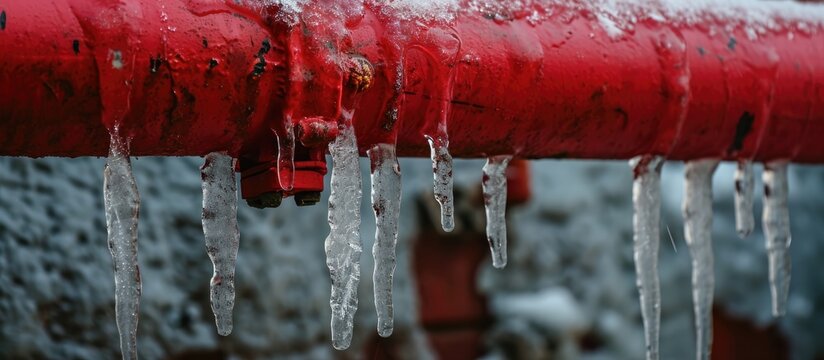Protecting Pipes from Cold Weather Issues: Critical Tips
Protecting Pipes from Cold Weather Issues: Critical Tips
Blog Article
In this article in the next paragraphs you will find a bunch of decent material pertaining to Preventing and dealing with frozen pipes.

Winter can ruin your pipes, specifically by freezing pipelines. Here's how to stop it from happening and what to do if it does.
Intro
As temperatures drop, the threat of icy pipelines increases, potentially resulting in expensive fixings and water damages. Comprehending exactly how to prevent icy pipes is critical for house owners in chilly environments.
Prevention Tips
Shielding prone pipes
Cover pipes in insulation sleeves or utilize warmth tape to safeguard them from freezing temperatures. Concentrate on pipes in unheated or outside locations of the home.
Home heating methods
Maintain indoor rooms adequately heated up, specifically locations with pipes. Open closet doors to enable warm air to circulate around pipelines under sinks.
Just how to identify frozen pipes
Search for lowered water flow from faucets, unusual smells or noises from pipelines, and visible frost on revealed pipes.
Long-Term Solutions
Architectural adjustments
Think about rerouting pipelines far from outside wall surfaces or unheated locations. Add added insulation to attic rooms, cellars, and crawl spaces.
Updating insulation
Purchase high-quality insulation for pipes, attics, and wall surfaces. Correct insulation aids preserve regular temperatures and decreases the danger of icy pipes.
Safeguarding Outside Plumbing
Yard pipes and outdoor faucets
Separate and drain garden pipes prior to winter months. Mount frost-proof spigots or cover outdoor taps with protected caps.
Recognizing Frozen Pipes
What causes pipes to freeze?
Pipelines ice up when subjected to temperature levels below 32 ° F (0 ° C) for extended periods. As water inside the pipelines freezes, it expands, putting pressure on the pipe walls and potentially causing them to break.
Risks and damages
Icy pipes can bring about water disruptions, residential property damage, and pricey repairs. Burst pipes can flood homes and trigger considerable architectural damage.
Indicators of Frozen Pipes
Determining frozen pipelines early can stop them from rupturing.
What to Do If Your Pipes Freeze
Immediate actions to take
If you believe icy pipes, maintain faucets available to alleviate stress as the ice thaws. Make use of a hairdryer or towels soaked in warm water to thaw pipelines gradually.
Verdict
Avoiding icy pipelines calls for proactive steps and fast feedbacks. By recognizing the causes, indicators, and preventive measures, property owners can secure their plumbing during winter.
5 Ways to Prevent Frozen Pipes
Drain Outdoor Faucets and Disconnect Hoses
First, close the shut-off valve that controls the flow of water in the pipe to your outdoor faucet. Then, head outside to disconnect and drain your hose and open the outdoor faucet to allow the water to completely drain out of the line. Turn off the faucet when done. Finally, head back to the shut-off valve and drain the remaining water inside the pipe into a bucket or container. Additionally, if you have a home irrigation system, you should consider hiring an expert to clear the system of water each year.
Insulate Pipes
One of the best and most cost-effective methods for preventing frozen water pipes is to wrap your pipes with insulation. This is especially important for areas in your home that aren’t exposed to heat, such as an attic. We suggest using foam sleeves, which can typically be found at your local hardware store.
Keep Heat Running at 65
Your pipes are located inside your walls, and the temperature there is much colder than the rest of the house. To prevent your pipes from freezing, The Insurance Information Institute suggests that you keep your home heated to at least 65 degrees, even when traveling. You may want to invest in smart devices that can keep an eye on the temperature in your home while you’re away.
Leave Water Dripping
Moving water — even a small trickle — can prevent ice from forming inside your pipes. When freezing temps are imminent, start a drip of water from all faucets that serve exposed pipes. Leaving a few faucets running will also help relieve pressure inside the pipes and help prevent a rupture if the water inside freezes.
Open Cupboard Doors
Warm your kitchen and bathroom pipes by opening cupboards and vanities. You should also leave your interior doors ajar to help warm air circulate evenly throughout your home.

I found that review on How To Avoid Freezing Pipes when looking around the web. I beg you set aside a second to distribute this article if you appreciated it. I praise you for being here. Return soon.
Instant Quote Report this page